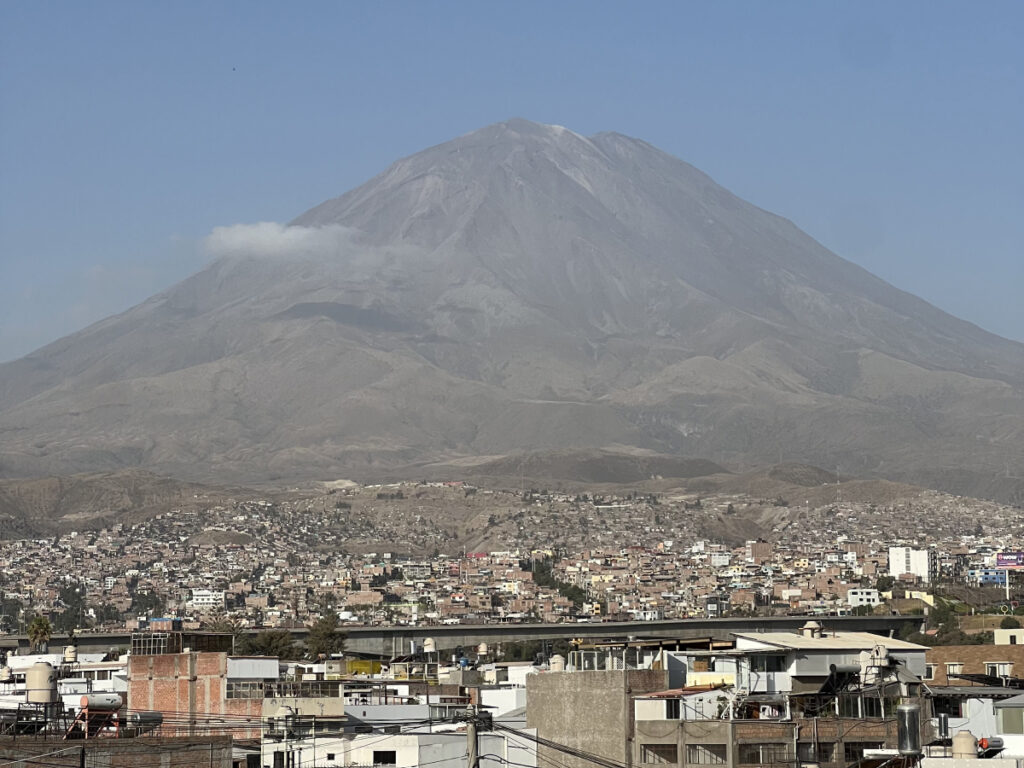El Misti is the kind of mountain you can’t ignore. It rises in perfect volcanic symmetry above Arequipa — the “White City” — a fixture on the horizon from rooftop bars, terraces, and other high viewpoints. At 5,822 meters, it’s both alluring and intimidating: high enough to test your lungs, yet close enough to tempt you into thinking you can conquer it in a weekend.
Most people attempt the El Misti climb over two days, camping on its dusty slopes under a blanket of Andean stars. But last November, I convinced myself (and my partner) that we could summit and descend in a single day.
Spoiler: we didn’t.
This post may contain affiliate links. If you purchase through them, I may earn a small commission at no extra cost to you.
About El Misti
The name “El Misti” comes from Quechua and is often translated as “The Gentleman”, a fitting title for the volcano’s imposing presence above Arequipa. It is a dormant stratovolcano that last erupted in the late 15th century. Its near-perfect cone dominates the skyline, with the distant peaks of Chachani and Pichu Pichu completing the region’s volcanic panorama. Its proximity to Arequipa and non-technical route options make it one of Peru’s most logistically accessible high peaks, yet it’s far from a casual stroll: the thin air, loose volcanic ash, and unrelenting incline turn it into a serious undertaking.
For many visitors to Arequipa, the El Misti climb is a bucket-list challenge — equal parts physical test and cultural experience.
Practical Info: El Misti at a Glance
- Elevation: 5,822 m
- Best Months: May–October
- Typical Duration: 2 days (recommended); 1 day for ultra-fit, experienced climbers
- Difficulty: High — altitude, scree, sustained ascent
- Nearest City: Arequipa
- Routes: North/Aguada Blanca, South/Grau, Pastores variation
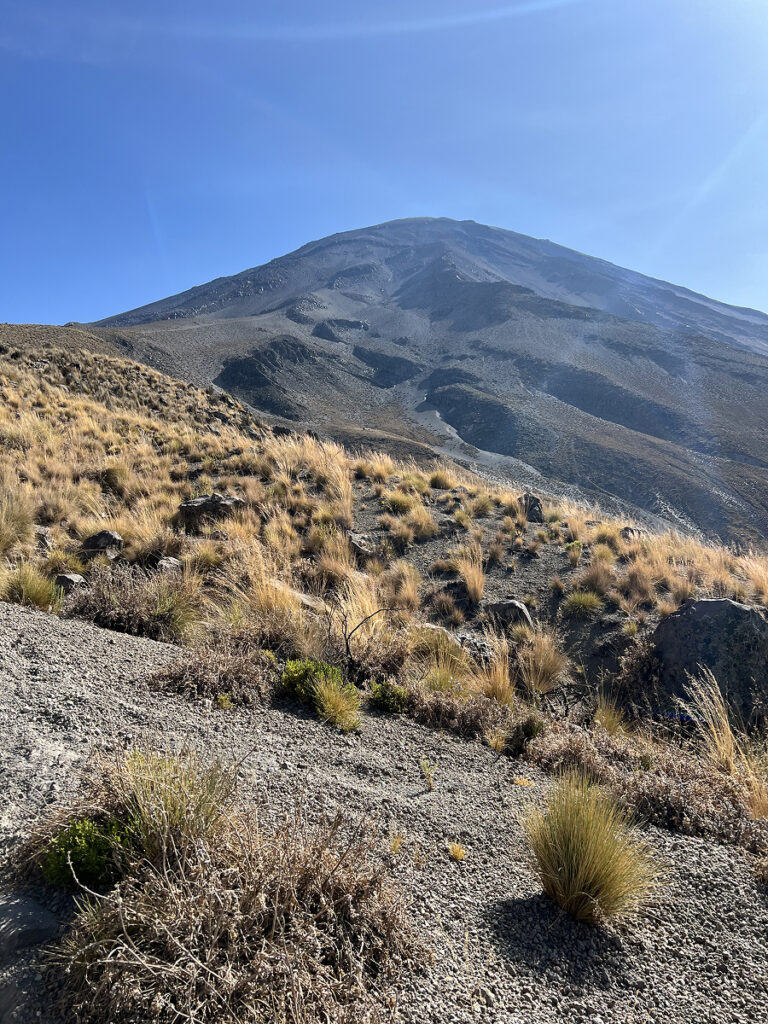
Choosing Your Route
Most climbers take the Grau Route from the south — it’s direct, relatively straightforward, and the go-to for guided groups. The Aguada Blanca Route starts higher on the northeast side and has scenic views but is used less often.
There’s also the far less-traveled Pastores Route from the southwest, steeper and more remote. My climb was a variation of this — recommended to us by a retired mountain guide.
The Route I Took
Our line was west of the South Variant, most likely a Pastores variation. And it came to us not through online research, but through a family connection: my partner’s uncle’s best friend, a retired mountain guide who “used to take groups up there back in the day.” You can see our exact route on AllTrails here — but note that this is not an official or recommended trail for most hikers.
He knew exactly how far a car could reach, drove us there at 5 a.m., hugged us goodbye, and promised to pick us up later. We, in our infinite wisdom, had decided not to camp. My partner wasn’t in the mood for a night in a tent, and I was equally delusional in thinking we could just pop up and down in a day.
AllTrails Map Disclaimer: This route shows my personal 1-day independent attempt via a Pastores variation. It is not an official or recommended route for most hikers. El Misti is a 5,800+ m peak with extreme altitude, loose volcanic scree, and unpredictable weather. Attempt without a guide only if you are fully acclimatized, experienced in self-navigation, and prepared for emergencies. You climb at your own risk.
My 1-Day Attempt on El Misti
Date: November 9.
Weather: Almost no clouds, perfect visibility.
Mood: Naïve optimism.
This was my first hike after 30 days of being unable to work out due to minor surgery — so naturally, I chose a 5,800 m volcano. We started with panoramic views of Arequipa waking up, the quiet broken only by the crunch of our boots. The vegetation thinned quickly until it felt like we were walking on some other planet.
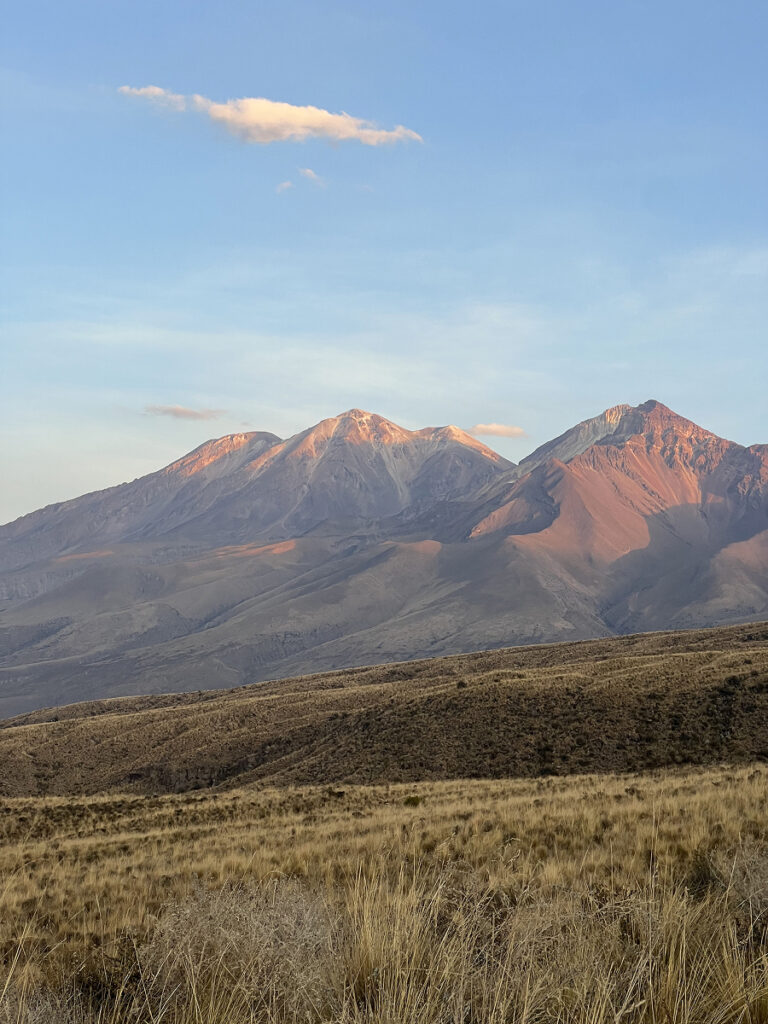
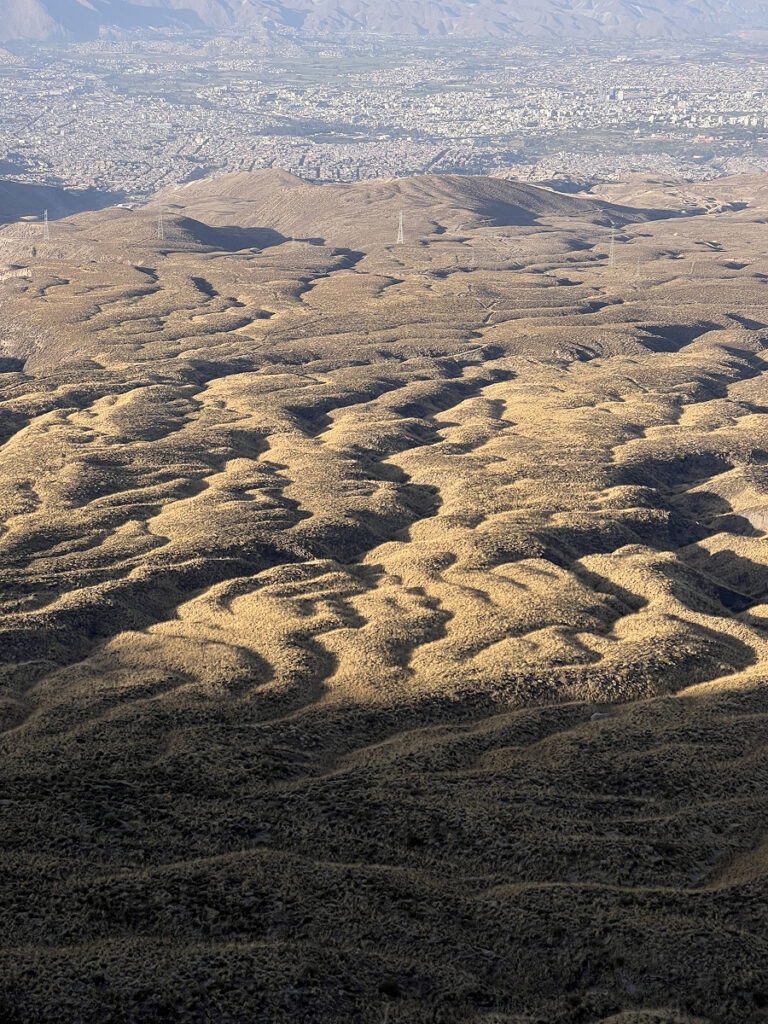
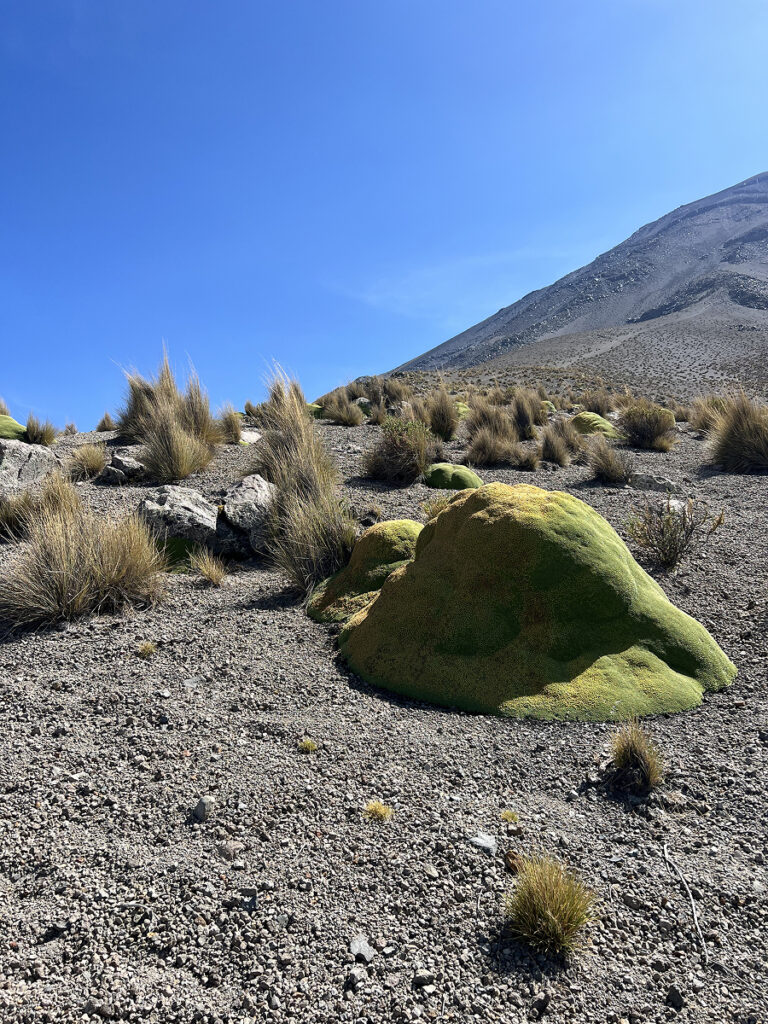
Then came the sand. The more we climbed, the looser the volcanic ash became. Each step forward slid half a step back. We laughed at the absurdity — until we stopped laughing.
We took plenty of coca leaf breaks, stuffing our cheeks and letting them sit while we kept moving. Between the constant chewing, regular sips of water, and snack stops, we kept a steady rhythm as we climbed from 4,100 m toward the thin-air zone.

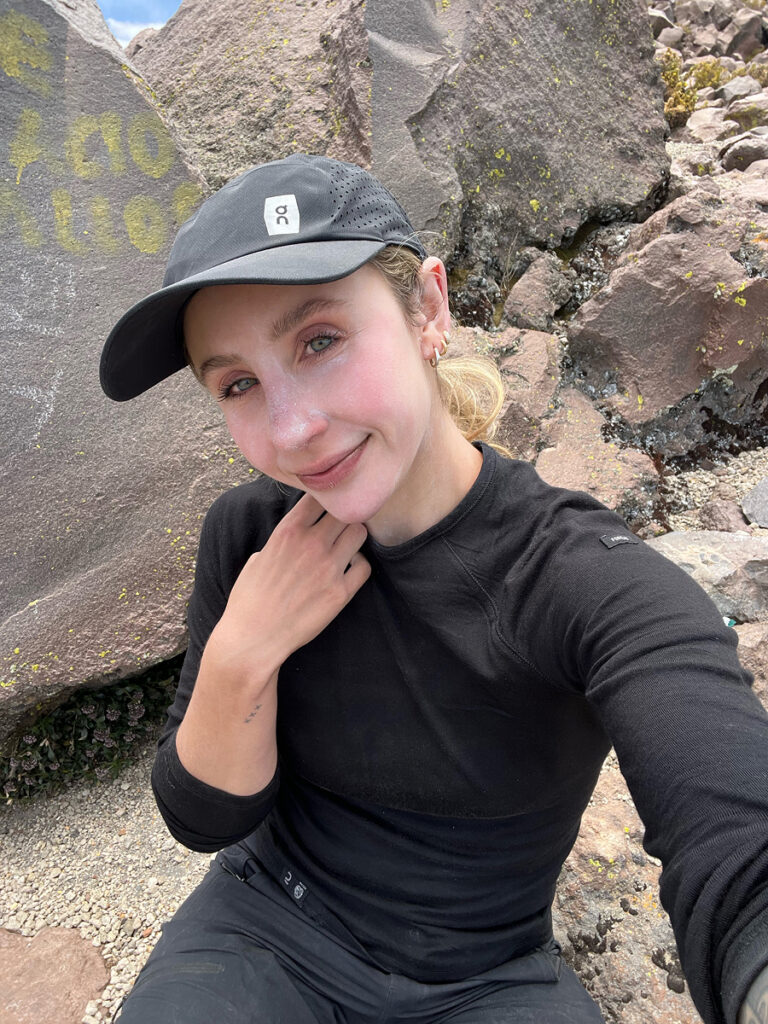
By early afternoon, the math was grim. My partner decided to stop, fashioning a “tent” out of trekking poles and his jacket to nap. I pressed on for another hour and a half, reaching 5,145 m — a vertical gain of 1,722 m in under eight hours. Physically, I felt fine, but the sun was dropping and we’d brought nothing for an overnight — no tent, no sleeping bags, nothing. Freezing to death on a volcano was not on my Arequipa to-do list, so I turned back.
We met our first other hikers of the day — a pair heading up to camp and summit the next morning. They confirmed what we already knew: we were insane for trying this in a day.
We reached the trailhead at 5:55 p.m., just as the sun dipped behind the horizon. The view from camp would have been spectacular.
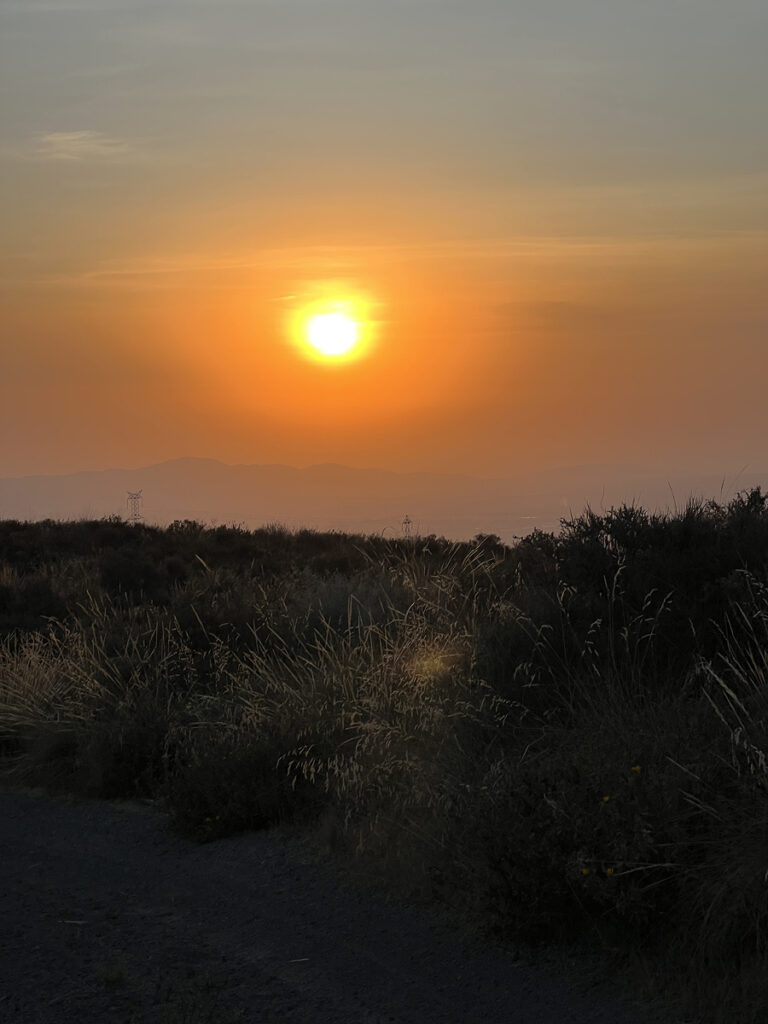
Planning Your El Misti Climb
Best Time to Go
- Dry season (May–October) offers the most stable weather.
- Shoulder seasons are possible but riskier for afternoon storms.
Acclimatization
Altitude sickness can hit anyone above 3,000 m, even the fit and experienced — and El Misti tops out at 5,822 m. The safest approach is to spend a few days at higher elevations before your climb so your body can adjust.
That could mean Cusco (~3,400 m) if it naturally fits into your Peru itinerary, or closer options like Chivay and villages in Colca Canyon (~3,600–4,000 m). Even day hikes in the volcanic foothills around Arequipa can help.
When I attempted El Misti, I’d only been in Arequipa (~2,300 m) for about a week and felt fine up to 5,145 m. Past high-altitude treks didn’t give me any lingering acclimatization, but they probably helped me pace myself, hydrate properly, and recognize how my body reacts above 5,000 m.
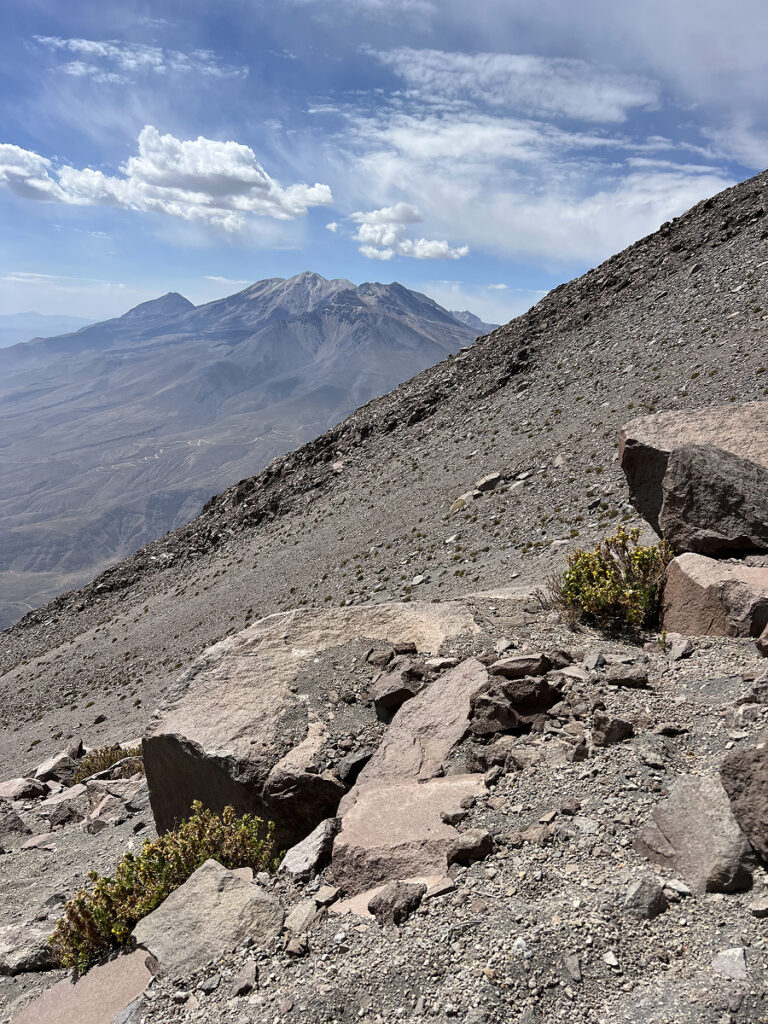
Gear for a 1-Day Attempt
For a 1-day El Misti climb, you’ll want:
- Lightweight base and mid layers
- Windproof shell
- Hiking boots with good traction
- Gloves, beanie, and sunglasses
- Sun protection: hat, sunglasses, and high-SPF sunscreen — the sun is brutal at this altitude
- Headlamp and trekking poles
- Minimum 3–4 L of water
- High-calorie snacks
If you’re doing a guided 2-day climb, your operator will usually provide camping gear like sleeping bags, tents, and mats — but it’s best to confirm exactly what’s included before you book.
Guided vs. Independent
I have quite some experience of high-altitude trekking and was acclimatized — but I’ll say this plainly: most people should hire a guide.
Guides handle logistics, provide safety oversight, navigate changing trail conditions, and give you a far better chance of summiting. They can also secure permits — something we, in our 1-day delusional glory, did not have.
Recommended Guided Climbs for El Misti
If you’re not an acclimatized, experienced high-altitude hiker, book a guided El Misti climb for safety and logistics. These tours typically include transport, meals, camping gear, and a professional mountain guide:
If You Don’t Want the Full El Misti Climb
Not everyone is up for a full summit attempt — and that’s okay. You can still experience El Misti’s volcanic slopes and sweeping views without the altitude grind. This half-day hiking tour takes you partway up the mountain in just a few hours, offering a taste of the climb with plenty of photo opportunities. Perfect if you’re short on time or still acclimatizing.
Challenges of the El Misti Climb
- Volcanic scree: The infamous “two steps forward, one slide back” terrain.
- Thin air: Oxygen levels drop to ~55% at the summit.
- Weather shifts: Even on a clear morning, clouds can sweep in by afternoon.
- Isolation: On lesser-used routes, you may not see another soul.
If I Did It Again
I’d camp. No question. Starting earlier and splitting the climb into two days would mean catching an epic sunset over Arequipa and having energy for the final push. I’d still be tempted to use the same Pastores variation — it felt wilder and more remote — but with more time to savor it.
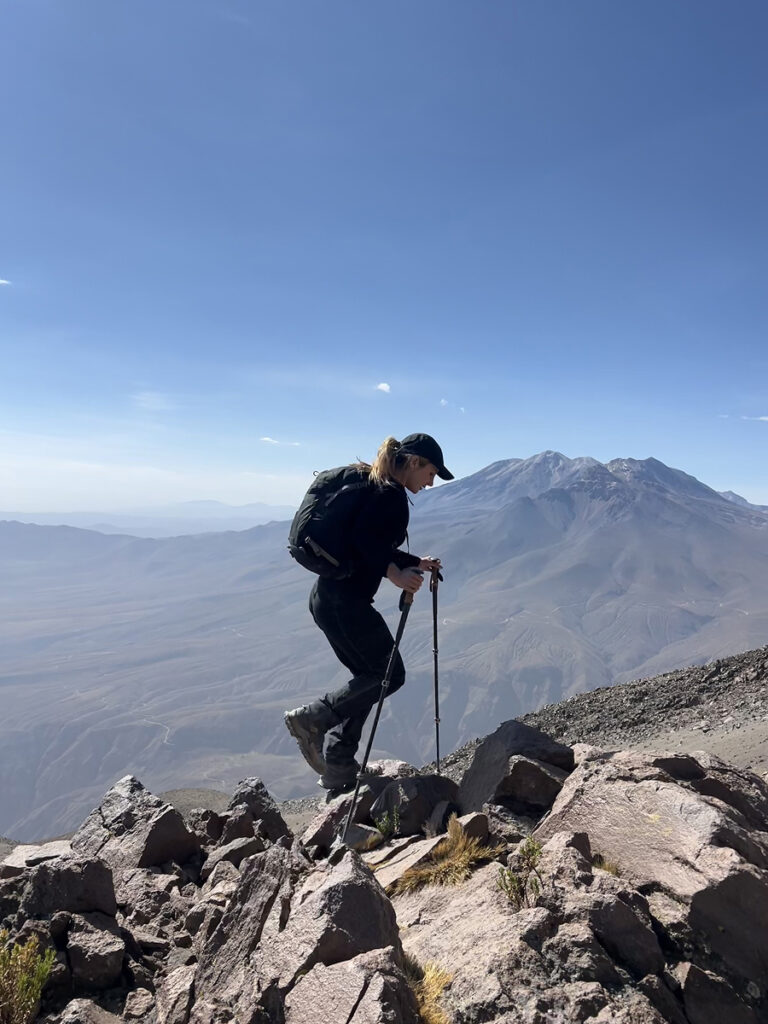
Final Thoughts
Summiting El Misti is an accomplishment, but so is turning back when the mountain — or the clock — says it’s time. I didn’t stand on the crater rim, but I did climb to over 5,100 m, laughed in volcanic sand, and watched the sun set on a volcano I’ll return to someday.
If you’re planning your own Arequipa volcano hike, prepare well, know your limits, and decide whether to go guided or independent. Either way, the mountain will still be there tomorrow — and the view will be worth the effort.
Further Reading
FAQ: Climbing El Misti
How hard is the El Misti climb?
The El Misti climb is physically demanding due to altitude, steep volcanic scree, and sustained elevation gain. Even for experienced and very fit hikers, the thin air above 5,000 m can trigger altitude sickness — which can make you very ill and force you to turn back. Proper acclimatization is essential.
Do you need a guide for El Misti?
Most hikers should take a guide for safety, acclimatization support, and logistics. Independent attempts are best left to experienced, acclimatized trekkers with navigation skills.
How long does it take to climb El Misti?
The standard climb takes 2 days with a high camp. Ultra-fit and experienced climbers sometimes attempt it in 1 day, but it’s not recommended for most people.
What’s the best time of year to climb El Misti?
May to October offers the most stable weather, with clearer skies and lower precipitation.
What is the El Misti elevation?
The volcano’s summit is 5,822 meters (19,101 ft) above sea level.

